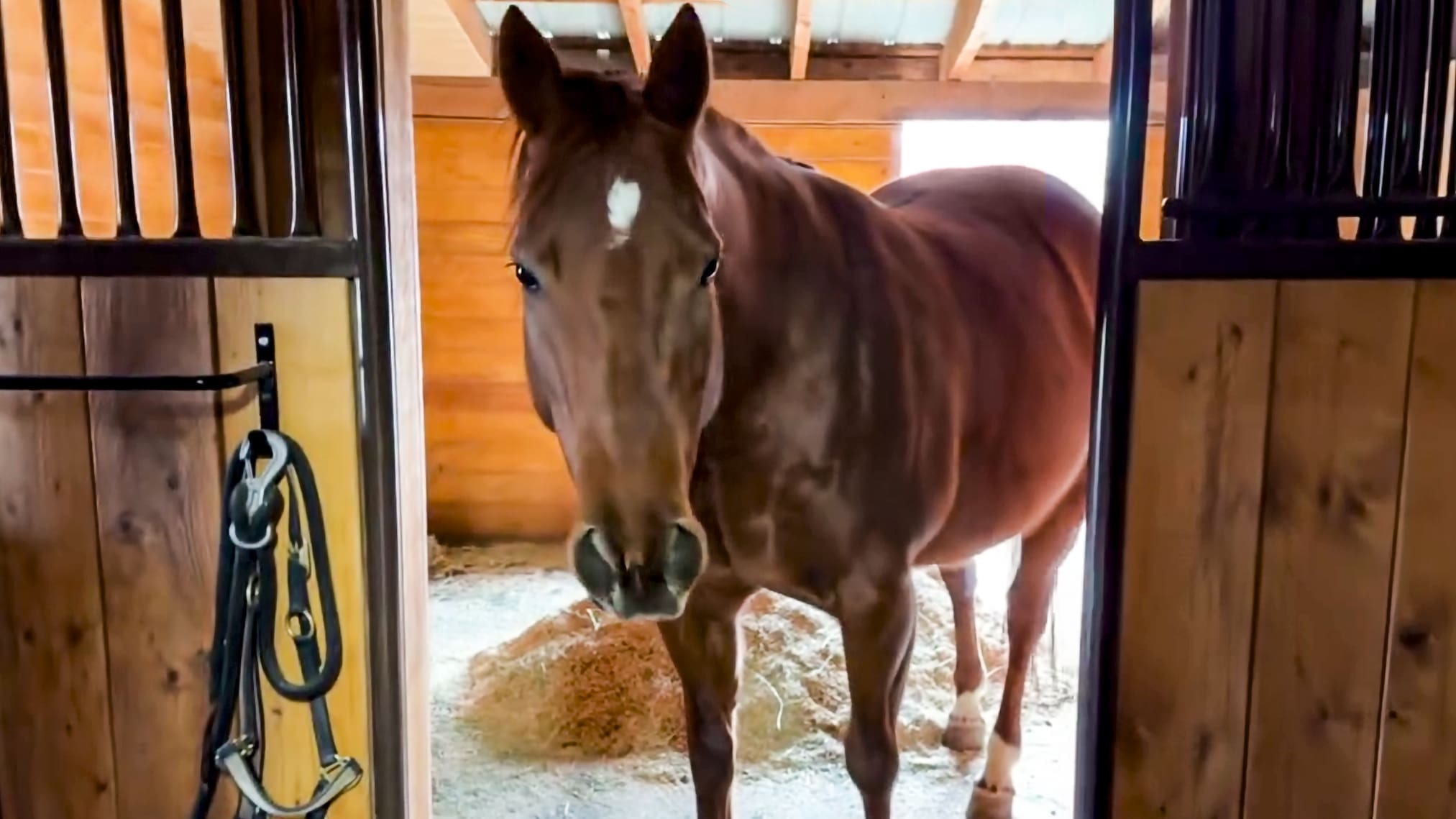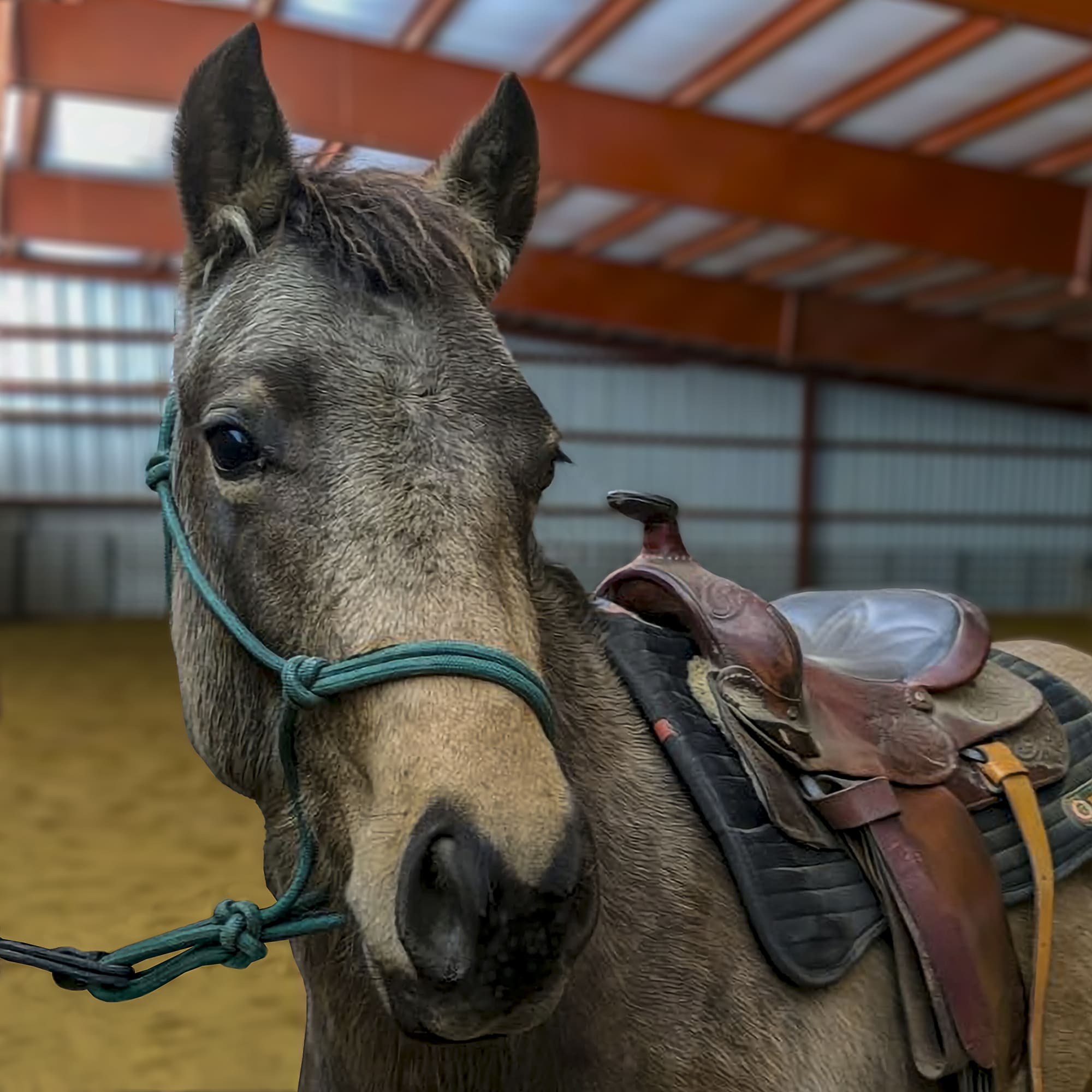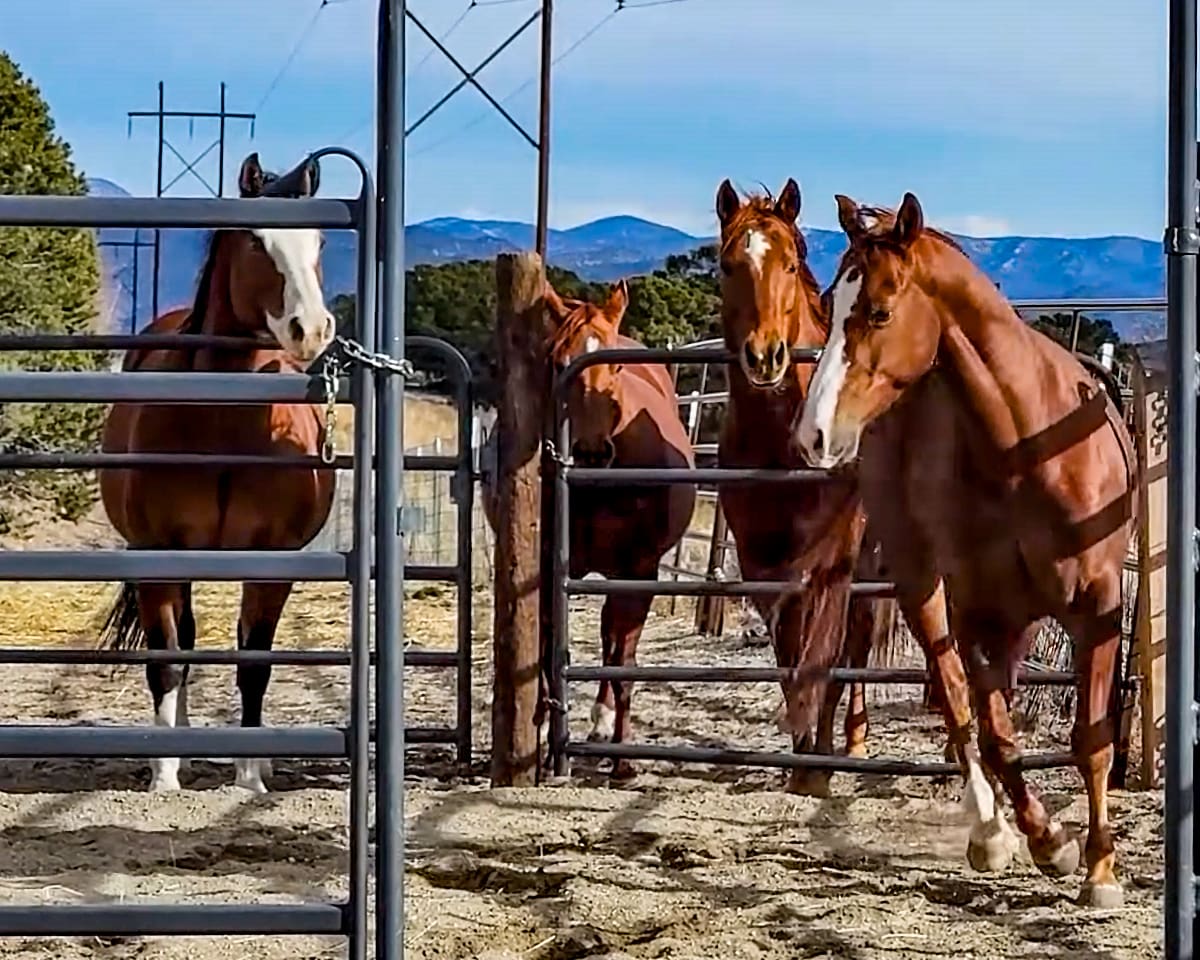I see it all the time at clinics, expos and at TV shoots. Sometimes it’s between untrained horses and inexperienced riders/handlers—a constant battle of the wills; but sometimes the opposite is true—often I see experienced handlers with trained horses and everyone is going through the motions but the horse has his ears laid back and a sour expression on his face. Maybe he’s doing what’s asked in the groundwork, but he’s giving subtle signs of disrespect such as crowding you with his shoulder or moving sassily with his hind-end cocked for action.
There are many causes for this type of adversarial relationship with your horse. Generally there exists poor communication between horse and human—either the rider giving conflicting signals (a painfully common occurrence) or the person over-cues the horse (then jerks back on the reins when the horse goes too fast). Or the rider drills the horse relentlessly, never recognizing the efforts of the horse and not releasing and rewarding the horse often enough.
Often a horse’s crankiness comes from the feeling it is being shouted at when it knows the cue well and is perfectly willing to do it. The cues of novice horsemen are often awkward and obtuse or, as an experienced handler trains a horse new skills, the cues are exaggerated and reactionary. But the horse is an extremely fast learner—he learns the cue and appropriate response right away, but the rider/handler doesn’t lighten his aids and is still, in effect, yelling at the horse to do it.
The horse has every right to be cranky when it feels like it is being yelled at constantly and for no reason. Too aggressive cues (especially when using a hard stick as a “motivator”) and too many repetitions can make the most willing horse begin to display signs of irritation, aggravation and even rebellion. Often, when a person has an adversarial relationship with their horse, it stems from a failure to read the signs of submission and obedience in the horse and thus, the “golden moment” is missed.
When a horse shows that he is willing to acquiesce to your authority and you keep hounding him—do it again, and again, and again—he starts feeling like he is being bullied. Some horses will take the bullying indefinitely while others will begin to fight back; but in all horses that are bullied, resentment will build and an adversarial relationship will develop.
Learning to “read” a horse, looking for the subtle changes in your horse’s behavior and emotions and giving the appropriate release of pressure, will make him eager to please you. Looking for changes in the elevation of the head, the licking and chewing when he understands, the relaxing of his frame, the head bobbing to the ground and rewarding this compliant and submissive behavior by letting him rest and giving him lots of praise will develop a horse that is respectful and eager to do your bidding.
At some point, you need to trust your horse and give him the latitude to prove he can and will do what you ask from a simple request and not from forcefulness. Sometimes this means loosening the reins or putting down the stick and asking him softly and kindly. He may make a mistake every now and then, which you should tactfully correct, but if you’re always pushing him around and doubting he’ll do what you ask, he’ll lose his willingness.
I don’t want a horse that is “jumping through the hoops” but with a bad attitude. I don’t want a horse that has animosity toward me and is only responding for fear of getting walloped with a stick. Instead, I want a horse that looks up to me, is always willing and attentive to my commands and who is eager to please me and win my approval. One that wants to be with me and knows that I will always treat him fairly and recognize his efforts.
Horses, being herd animals, are strongly inclined to seek out the approval of their peers. Acceptance into the herd is essential for their survival. I want a horse that seeks out my approval, is willing to try anything to get it and who craves the stroking and petting he gets from me for a job well done.
Beyond all else, horse seek comfort and security. That’s why making the right thing easy and the wrong thing hard is an incredibly effective training technique and why horse’s thrive on strong leadership—for the security it gives them. Horse gain security in knowing that rules will be enforced, good effort will be rewarded and discipline will be meted out as necessary.
In spite of what many trainers would like you to believe, there is no “cookie cutter” training recipe that works on every horse. Each horse is an individual with a distinct temperament and its own experience and view of the world. Your training methods have to be adjusted to the individual—the strong pressure used to motivate one horse might over-whelm another horse. But all horses seek comfort and security and all horses respond to good leadership.
It’s not to say that I never get in a fight with a horse—sometimes it is unavoidable. But I try not to start a fight with a horse—the risk of losing is too great. When you do butt heads with a horse, it should be a very temporary situation and should result in the horse acquiescing and your acceptance and appreciation of his subordinate attitude. If you continue to treat him as an adversary after that score is settled, he will continue to be one.
When you examine the relationship you have with your own horse, would you say it is cooperative and based on mutual respect? Does your horse respect your authority, look up to you and seek your approval? Or does he constantly challenge your authority or do what you ask of him but with resistance and a bad attitude? If the latter is true, it’s time to examine your relationship, see what culpability you have and look for ways to make a positive change. I love to help people (and their horses) make this change—so maybe I’ll see you at a clinic this year!



